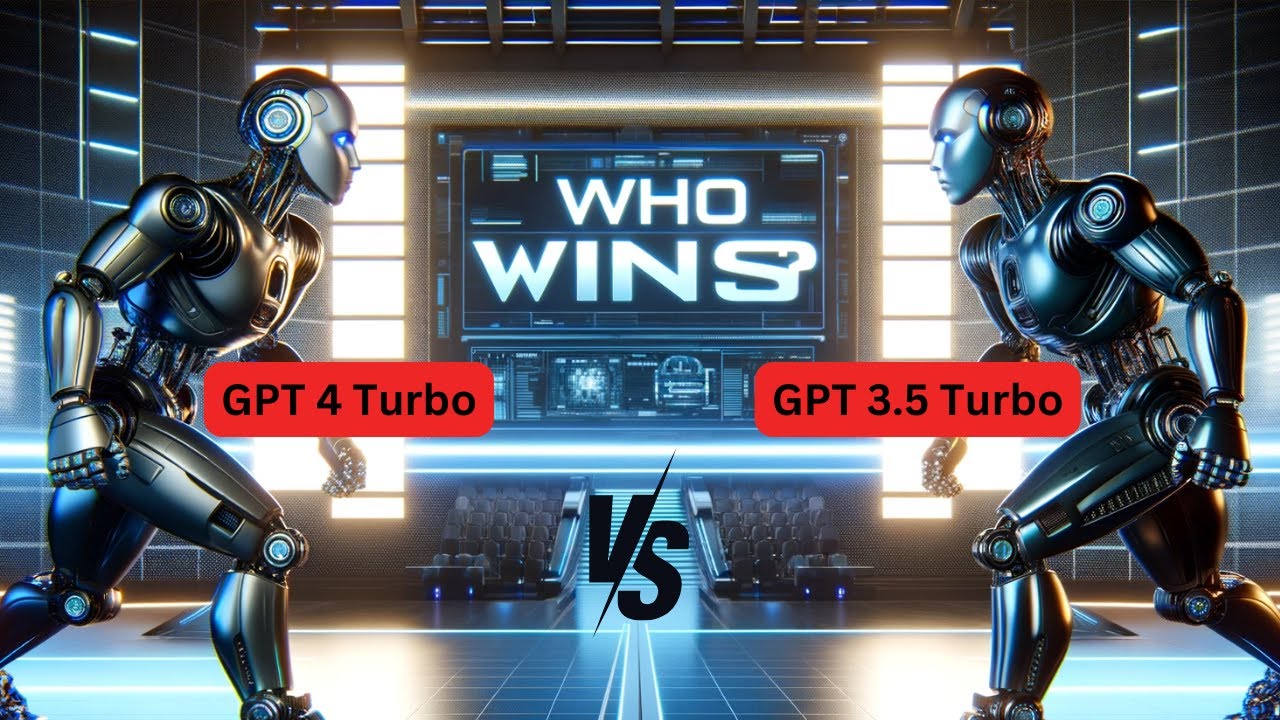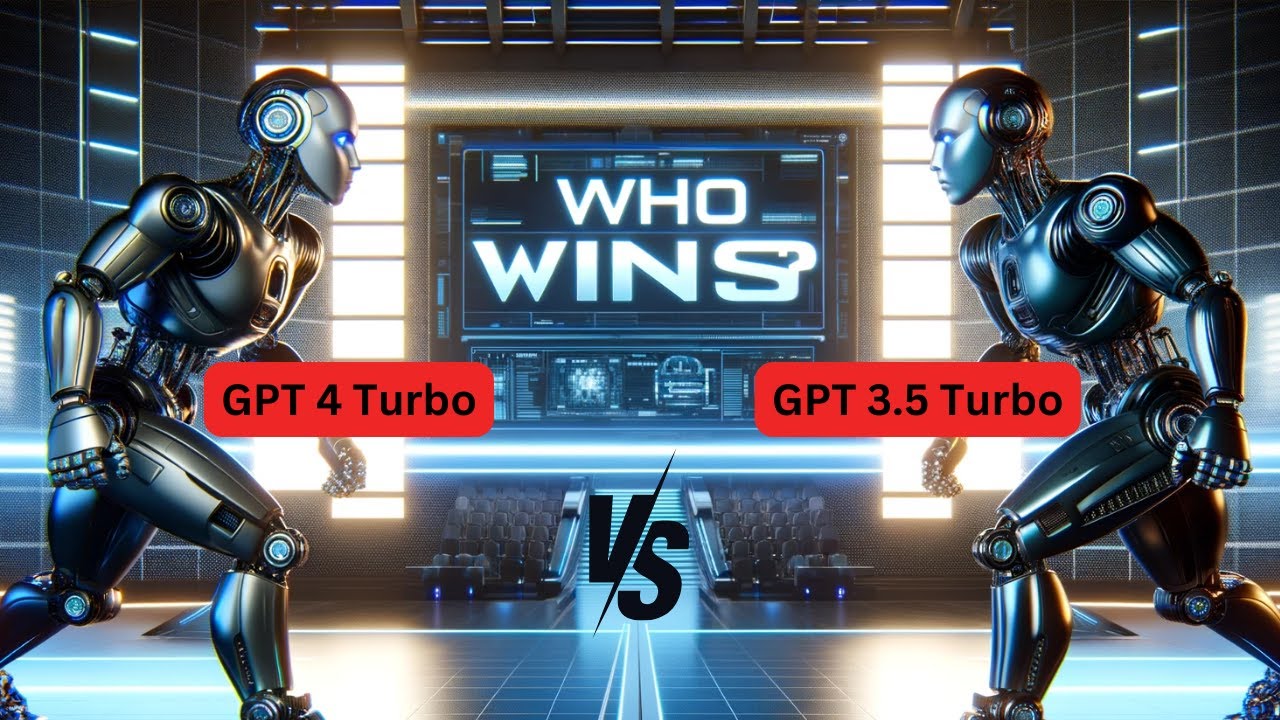In the video titled “GPT-4 Turbo vs. GPT-3.5: Which Writes Better Articles,” digital creator Avi conducts a comprehensive analysis comparing the writing abilities of these two AI models. The video covers various aspects, including output quality, formatting, use of links, and relevance of information. Avi discusses the pros and cons of each model, highlighting their strengths and weaknesses. Real-time analysis is demonstrated, showcasing how each version interprets prompts and executes the writing process. The aim of the video is to provide viewers with an objective and factual comparison, with a focus on educational purposes. Community engagement is encouraged, and viewers are invited to leave their thoughts and experiences in the comments section. Don’t forget to like, share, and subscribe for more AI-related content!
In today’s video, Avi takes on an interesting experiment, comparing the output quality of GPT 3.5 and GPT 4. This video focuses specifically on their performance in blog post writing. Using identical prompts and processes, Avi generates two articles: one using GPT 3.5 Turbo 16k and another using GPT 4. The analysis delves deep into the articles, examining word count, formatting, content quality, and relevance. Despite some differences, both models provide valuable results. Avi suggests combining GPT 4 and the expansion prompt from GPT 3.5 to optimize both quantity and quality in article writing. Viewers are encouraged to watch the video for an in-depth comparison and share their opinions on which AI model excels in the world of article writing.

Overview
In this article, we will be comparing the writing abilities of two advanced AI models: GPT-4 Turbo and GPT-3.5. We will analyze various aspects of their output, including quality, formatting, use of links, and relevance of information. Through a detailed comparison, we aim to determine which AI model excels in the world of article writing. We will also explore the pros and cons of each model and evaluate their accuracy and relevance. Additionally, we will discuss the differences in their formatting capabilities, including paragraph structuring and the inclusion of links. This article will provide valuable insights into the evolution of AI writing tools and their implications for content creation. We encourage community engagement and invite readers to share their thoughts and experiences in the comments section.
Comparison of Writing Abilities
Quality of Output
One of the key aspects we will be evaluating is the quality of the output produced by GPT-4 Turbo and GPT-3.5. Both models have been trained extensively on vast amounts of data, but it’s important to analyze their ability to generate coherent and informative articles.
In our analysis, we found that GPT-3.5 produced a longer article, with a word count of 1400 compared to GPT-4 Turbo’s 1200 words. However, the higher word count does not necessarily translate to better quality. GPT-4 Turbo demonstrated a higher level of relevance and accuracy, providing more up-to-date information related to the topic. The content generated by GPT-4 Turbo was specifically focused on 2023, while GPT-3.5 provided more general information.
Formatting
When it comes to formatting, both AI models showed proficiency, but there were differences in their approaches. GPT-4 Turbo used bullet points effectively, making the information more readable and organized. On the other hand, GPT-3.5 lacked such formatting elements, resulting in a less visually appealing article.
It is worth noting that GPT-4 Turbo’s article may have seemed slightly incomplete in certain sections due to short paragraphs. However, this can be easily resolved by using the expansion prompt to generate more in-depth content. Overall, GPT-4 Turbo’s formatting capabilities provided a more reader-friendly experience.
Use of Links
In terms of using links, both AI models were able to include relevant internal and external links. However, GPT-4 Turbo demonstrated a stronger ability to provide up-to-date and insightful information through the use of links. The links in GPT-4 Turbo’s article were more focused on 2023 and AI engineering, enhancing the overall quality and relevance of the content.
Relevance of Information
When analyzing the relevance of information, GPT-4 Turbo outperformed GPT-3.5. GPT-4 Turbo’s content was specifically tailored to the topic of becoming an AI engineer in 2023, providing more specific and current data points. In contrast, GPT-3.5 offered more general information and lacked the same level of relevance to the given topic.
Pros and Cons
GPT-4 Turbo
Pros:
- More relevant and up-to-date information
- Stronger formatting capabilities
- Inclusion of insightful links
- Provides accurate and useful content
Cons:
- Slightly shorter word count compared to GPT-3.5
- Some sections may appear incomplete
GPT-3.5
Pros:
- Longer word count
- Good readability score
- Provides general information
- Can be cost-effective
Cons:
- Less relevant and up-to-date information
- Limited formatting capabilities
- Inclusion of some incomplete sections
Real-Time Analysis
Prompt Interpretation
Prompt interpretation is crucial for an AI model’s writing process. Both GPT-4 Turbo and GPT-3.5 demonstrated the ability to understand the given prompts and generate relevant content.
However, GPT-4 Turbo exhibited a higher level of prompt interpretation, producing more in-depth and specific articles in response to the given prompts. GPT-4 Turbo’s understanding of the topic and ability to generate informative content surpassed that of GPT-3.5.
Writing Process Execution
The execution of the writing process is another aspect we assessed. Both GPT-4 Turbo and GPT-3.5 were able to generate articles based on the given prompts and produce coherent and readable content.
However, GPT-4 Turbo showcased a more refined writing process, resulting in a higher level of accuracy and relevance. The articles generated by GPT-4 Turbo were more focused, organized, and provided valuable insights into the topic.
Evaluation of Accuracy and Relevance
Accuracy and relevance are crucial factors when assessing the quality of AI-generated content. In our analysis, GPT-4 Turbo proved to be more accurate and relevant compared to GPT-3.5.
GPT-4 Turbo’s ability to provide up-to-date, specific, and insightful information related to becoming an AI engineer in 2023 was commendable. The content generated by GPT-4 Turbo was tailored to the given topic, offering a higher level of accuracy and relevance to the readers.
On the other hand, GPT-3.5 provided more general information, lacking the same level of specificity and relevance. While it produced a longer article, the quality and accuracy of the content were not as impressive as that of GPT-4 Turbo.
Differences in Formatting Capabilities
Paragraph Structuring
In terms of paragraph structuring, GPT-4 Turbo showcased stronger formatting capabilities. It effectively used bullet points to present information in a more organized and digestible manner. This formatting feature enhanced the readability and overall user experience.
GPT-3.5, on the other hand, lacked such formatting elements and presented the content in a more traditional paragraph structure. While it was still readable, the lack of bullet points and clear sections may have made the information less visually appealing and harder to follow.
Inclusion of Links
Both GPT-4 Turbo and GPT-3.5 demonstrated the ability to include relevant links in their generated content. However, GPT-4 Turbo’s inclusion of links was more insightful and up-to-date, adding value to the information provided.
The links in GPT-4 Turbo’s article were specifically tailored to the topic and focused on 2023 and AI engineering, further enhancing the relevance and credibility of the content. GPT-3.5’s links, while still relevant, did not provide the same level of insightful information.
Useful Links for Further Reading
Throughout this article, we have shared valuable resources and further reading links to enhance your understanding of AI writing technology. Here are some useful links for further exploration:
Evolution of AI Writing Tools
With the development of AI writing tools, we have witnessed significant advancements from GPT-3.5 to GPT-4 Turbo. These advancements have implications for future content creation and how AI models can assist in generating high-quality, accurate, and relevant articles.
GPT-4 Turbo’s ability to provide more up-to-date information, better formatting capabilities, and stronger prompt interpretation highlights the potential of AI writing tools in improving the content creation process. As AI models continue to evolve, we can expect even more advanced features and enhanced performance in generating high-quality articles.
Community Engagement
We highly value community engagement and invite readers to share their thoughts and experiences in the comments section. We encourage you to discuss which AI model you believe performs better and why. Your insights and perspectives are invaluable in fostering a meaningful discussion on AI writing tools.
Call to Action
If you found this article helpful and informative, we encourage you to like, share, and subscribe to our channel for more AI-related content. By supporting us, you can stay updated on the latest advancements in AI writing technology and explore the world of AI and technology more deeply.
We hope this article has provided you with valuable insights into the comparison of GPT-4 Turbo and GPT-3.5 in terms of writing abilities. Remember to watch the accompanying video to see the AI models in action and determine which one excels in the world of article writing. Thank you for joining us on this AI journey!
